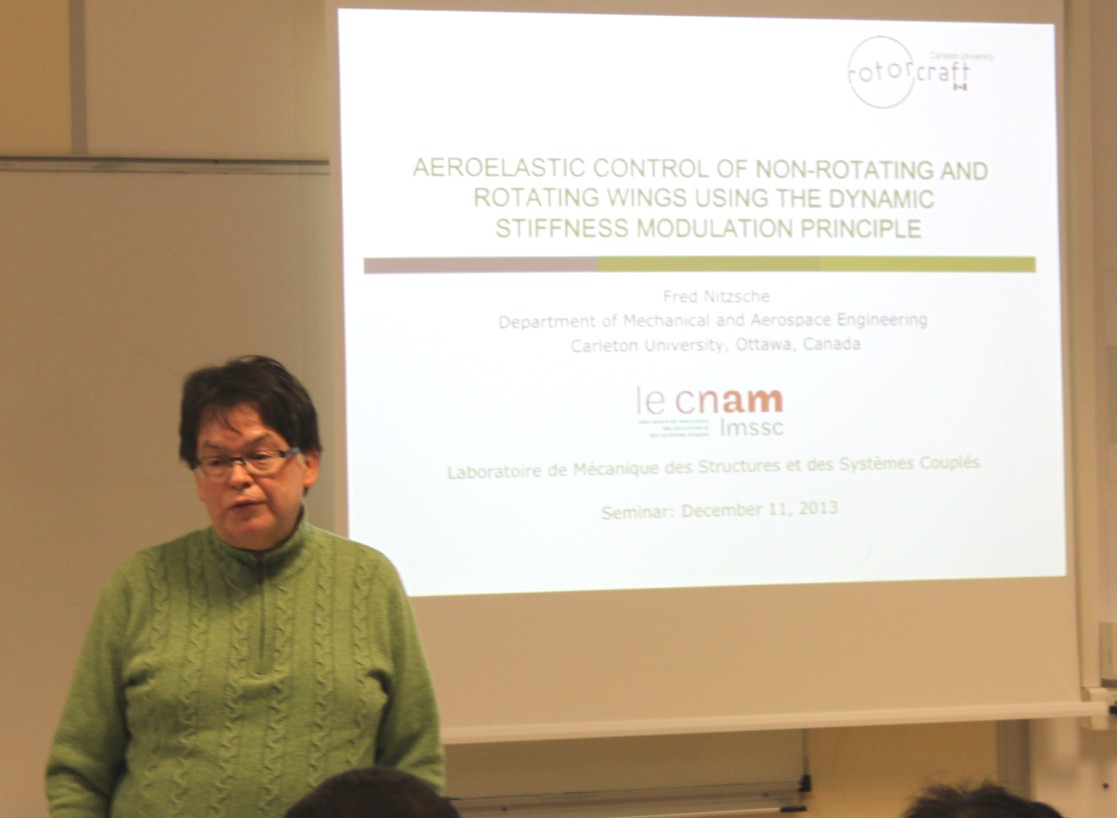Aeroelastic control of non-rotating and rotating wings using the dynamic stiffness modulation principle
At Cnam, Paris, December 11th 2013, 2.30 p.m.
Fred Nitzsche
Professor, Department of Mechanical and Aerospace Engineering, Rotorcraft Research Group, Carleton University, Ottawa, Canada

Carleton University's Rotorcraft Research Group is working since 2003 in the development of an active rotor control system that incorporates a mechanism for helicopter blade pitch dynamic stiffness modulation at the root, the Active Pitch Link (APL). We believe that this system will vastly expand the capability of smart material systems to overcome their intrinsic stroke limitations and to attain superior performance in performing Individual Blade Control for helicopter rotor-induced vibration reduction. The proposed system was recently tested at the whirl-tower facility built by Carleton University on the grounds of the National Research Council Canada (NRCC).
This paper first reports the remarkable achievements obtained with a dynamically similar, 1-meter span hinged rotor blade model and further discusses its results on physical and mathematical grounds. It was verified that up to 100% reduction in the transmitted loads occurred at the target 2/rev frequency when the blade was excited by a transversal jet to mimic the asymmetric flow existent in the helicopter rotor forward flight condition. This remarkable result was obtained using a simple open-loop control algorithm that can be optimized to a target higher-harmonic frequency of the rotor, minimizing its impact on the rotor fundamental cyclic control frequency at 1/rev. In another experiment performed at University of São Paulo, semi-passive control techniques using shunted piezoelectric materials were investigated for the aeroelastic control of a non-rotating wing. Piezoelectric coupling was added to the plunge spring suspension of a typical section. In the experiments, the Synchronized Switch Damping on Inductor technique (SSDI) was employed. It was demonstrated that both flutter and limit-cycle oscillations of the typical section were controlled out over a range of airflow speeds.
Finally, the similarity between the APL and the SSDI technique is discussed and recognized that they are both based on a dynamic stiffness modulation control principle.
